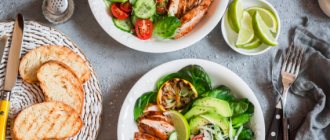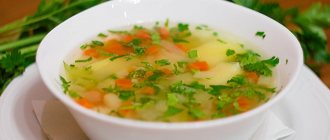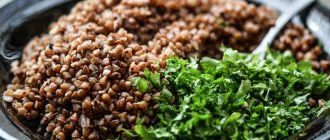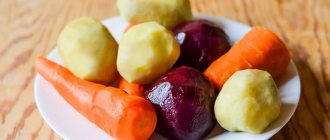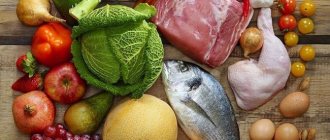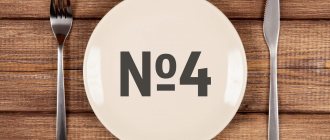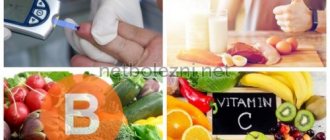General rules
Medical nutrition is an important component of general treatment, especially for diseases of the gastrointestinal tract. Dietary Table No. 5A according to Pevzner is prescribed in the acute period of hepatitis , cholecystitis and during exacerbation of chronic forms of these diseases.
It is also recommended for combined pathologies - diseases of the liver, gall bladder, stomach and intestines. The purpose of its purpose is thermal, mechanical, chemical and sparing of all digestive organs. It creates maximum rest for the liver, which is important during an exacerbation, and helps normalize its function and bile ducts.
The basic table for these diseases is Diet No. 5 , and this table is a variation of it. Diets 5 and 5A differ in the degree of mechanical and chemical sparing, methods of preparing dishes and therefore are prescribed during different periods of these diseases - Table No. 5A is more gentle.
The mechanical effect of food products is determined by the degree of grinding, their consistency and volume, as well as the nature of processing (cooking, stewing or frying). The chemical effect is due to the substances included in the products. Strong chemical irritants in food are extractives and essential oils. The minimal thermal effect is caused by dishes whose temperature is close to body temperature. All these points are taken into account in this treatment table.
- Contains steamed and boiled dishes from twisted meat and chopped boiled vegetables; only some dishes are allowed to be baked without a rough crust.
- Sautéing, stewing and frying are excluded.
- 5-6 meals a day are provided, in small portions.
- Fats (refractory) and salt are limited, and proteins and carbohydrates are contained in the physiological norm (90 g and 350 g, respectively).
- Increased content of lipotropic substances (cottage cheese, whey, buttermilk, buckwheat, fiber, polyunsaturated fatty acids). These substances protect the liver from fatty degeneration, reduce the risk of stone formation and reduce the deposition of cholesterol in blood vessels.
- Highly extractive dishes, foods rich in purines and oxalic acid are completely excluded.
- Coarse fiber is not allowed in food.
Inflammatory diseases of the gallbladder are the most common pathology and this diet is most often prescribed for cholecystitis (acute and with exacerbation of chronic). Cholecystitis is infectious in nature, but its development is also caused by stagnation of bile. The disease is characterized by pain, which is pronounced in the acute stage, and the pain can be unbearable. dyspeptic syndrome occurs ( bitterness in the mouth , nausea and vomiting flatulence , diarrhea or constipation may occur .
In the first days of an exacerbation, complete fasting is prescribed to maximize sparing of the gastrointestinal tract. Allowed to drink: weak tea, diluted juices, rosehip infusions. On day 3, the patient is transferred to Table No. 5B , which is indicated for severe pain. The duration of stay is up to 6 days and during this time the patient is on strict bed rest. After 7 days, an extended Diet 5A is indicated, on which the patient remains for 1-2 weeks.
It excludes:
- products that increase fermentation and rotting (legumes, millet, cabbage in any form);
- strong stimulants of bile secretion and gastric secretion (spices, mushrooms, horseradish, pickled vegetables, mustard, salty, fermented foods);
- fiber-rich and sour fruits (citrus fruits, sour plums, cranberries);
- fatty meats, fried, smoked meats, liver, brains, canned food, kidneys, stewed meat, sausages, cream, fatty and sour cottage cheese;
- coffee, cocoa, carbonated drinks.
Mashed potatoes
The same diet is prescribed after removal of the gallbladder or liver surgery, but not immediately. 12 hours after the operation, you can only drink still water (up to 500 ml per day). On the second day, kefir (low-fat), unsweetened tea, and jelly are allowed. All servings are no more than 0.5 cups, taken every 3 hours.
From the fourth day, it is allowed to eat food up to 8 times a day in small portions (150 g each). This can be mashed potatoes (semi-liquid), pureed soups in water, egg white omelet, mashed boiled fish, fruit jelly. Liquids allowed are juices (apple, pumpkin) and tea with sugar. On the fifth day, biscuits and dried wheat bread are introduced. A week after the operation, grated porridge (buckwheat, oatmeal), boiled rolled meat, cottage cheese, fermented milk products and vegetable puree are added. From the third week the patient is transferred to Table No. 5A. For acute hepatitis, this table is prescribed for 2-6 weeks.
For pancreatitis, the same principles of nutrition and restrictions are followed. During an exacerbation, the amount of protein is reduced to 60-80 g, fat to 50-60 g and carbohydrates to 200-250 g, since they stimulate the function of the pancreas. During the recovery period and with chronic pancreatitis, an increased amount of protein is provided, especially in case of exhaustion (up to 120 g), the amount of fat is at the lower limit of normal (70 g) and carbohydrates (350 g), extractive substances (cabbage decoction, meat and fish) are necessarily limited broths) and coarse vegetable fiber. All dishes are served boiled or steamed, chopped. These requirements are better met by Table No. 5P , which has two options (nutrition in the acute period and during mild exacerbation).
The essence of table number 5p
For pancreatitis, 2 Pevzner tables are prescribed. In the acute form of the disease (without complications), during the first 2-4 days they adhere to diet number 0 - fasting. If the patient's condition improves, they move on to diet number 5.
Photo: www.wnyurology.com
If the patient becomes worse or complications of the underlying disease develop, eating is contraindicated.
Table 5 p is prescribed to patients with pancreatitis in order to reduce the production of enzymes by the pancreas. The affected organ actively produces secretion with an increased enzymatic composition. It is dangerous because it can destroy gland tissue, less often than other organs, which causes severe and irreversible consequences both for the pancreas and for the body as a whole.
The diet is characterized by a high concentration of protein in the diet, but a reduced content of carbohydrates (especially sugar) and fats. The consumption of cholesterol-containing foods, essential oils, foods with extractive substances, purines, refractory fats, and coarse fiber is sharply limited.
Dietary food can be prescribed in 2 options. The choice depends on the general condition of the patient, the affected pancreas (prevalence of the lesion), the presence of concomitant pathologies (cholecystitis and/or cholelithiasis, insufficiency of the functions of other organs and systems).
The essence of the 5p table comes down to minimizing damage to the pancreas and other organs, stimulating restoration processes in the body, and restoring gland function.
Chemical composition of the diet for inflammation of the pancreas for a day:
- energy value of consumed products (calorie content) – 2600 kcal (kilocalories);
- carbohydrate content – 350 g;
- sugar consumption – up to 40 g;
- protein content - up to 120 g, but not less than 70 g. 60% should be animal proteins;
- proportion of fats – 70-90 g. 20% should be vegetable fats;
- salt consumption is limited to 10 g;
- It is recommended to drink 1.5-2 liters of liquid.
Important! The calculation is given for the average person who is not exposed to significant physical activity.
5 p first part
Dietary nutrition is prescribed from 3-4 days after the patient’s condition has improved and the enzymatic activity of the secretion of the affected organ has decreased. At this time, there is a decrease in clinical symptoms (pain symptoms, organ failure, disruption of the digestive tract, etc.).
The first part (1st option) of the diet has a low energy level. Proteins predominate, the proportion of carbohydrates and fats is reduced.
The patient should eat small meals often.
The recommended frequency of meals is 5-6 times/day. Considering the time range, the patient needs to eat every 3-4 hours. The consistency of the food should be semi-watery or watery.
You need to follow this table until your condition improves significantly or until pancreatitis enters the chronic stage.
Important! There are restrictions on the temperature of food - it should not be hot or cold.
5 p second part
The diet is less rigid than the previous version. It is prescribed after a noticeable improvement in the condition (minimization of clinical manifestations of pancreatitis) or chronic pancreatic disease.
The use of the second part of the table number 5 p comes down to maintaining stable functioning of the gastrointestinal tract, reducing the rate of pancreatitis, and preventing complications.
The diet allows you to speed up the recovery processes in the gland and stabilize the level of enzyme secretion.
The calorie content of the food is not high. The diet limits the content of fats, carbohydrates, essential oils, and salts. The concentration of proteins, vitamins, substances that improve the function of the liver, pancreas, gall bladder, and intestines has been increased. Avoid eating fried foods and foods that cause increased formation of gases that enhance fermentation processes in the intestines.
Authorized Products
Diet Table 5A according to Pevzner includes:
- Soups prepared only in vegetable broths with pureed vegetables. You can prepare puree soups and cream soups, milk soups (milk is diluted with water). You can put cereals in soups (semolina, rice, rolled oats, but boil or puree well). Vegetables are allowed to be chopped very finely (potatoes, carrots, pumpkin, zucchini); they cannot be fried to season soups. Soups are seasoned with sour cream, milk, cream, butter or simply dried flour.
- Wheat bread (grades I and II) is only allowed if it is stale, in order to prevent intestinal bloating. The diet is expanded with the introduction of savory cookies.
- Lean beef, veal, rabbit, chicken. The meat of young animals and birds (veal, chickens) is consumed sparingly due to its high purine content. Meat is recommended boiled and steamed and only chopped products (cutlets, meatballs, meatballs). Boiled chicken can be eaten in pieces.
- Low-fat fish, steamed and boiled, in the form of cutlets and pieces.
- Cereals, of which semolina, rice, buckwheat, oatmeal, and oatmeal are preferable. Porridges are boiled in water with the addition of milk and ground (except for semolina), as a result of which they have a semi-liquid consistency. You can make semolina and rice souffle, as well as porridge from buckwheat and rice flour, which speeds up the cooking process, since there is no need to grind the dish. Thin boiled vermicelli is allowed.
- Low-fat dairy products: kefir, acidophilus, yogurt. Milk is poorly tolerated in the presence of colitis, so it is added only to dishes (omelettes, cereals, sauces, soups). You can eat half-fat cottage cheese in its natural form and as part of casseroles, soufflés, and puddings. Sour cream is used only as a seasoning for dishes. It is allowed to eat mild cheese, but in grated form.
- Omelettes are white only. Yolks are limited to one per day and only in dishes.
- Potatoes, carrots, cauliflower and beets - they are served boiled and grated, as well as in the form of a soufflé. Zucchini and pumpkin can be eaten in boiled pieces.
- You can use sauces based on vegetable broth and mucous broth of cereals with the addition of sour cream and milk. The flour is not fried when preparing them.
- Ripe, sweet and soft fruits, raw, pureed and natural, baked and boiled. You can make boiled fruits and berries, jellies, jelly and mousses. Dried fruits are used pureed.
- Milk jelly, marmalade, sugar, marshmallows, honey, jam.
- Butter is added to dishes in its natural form. Vegetable oil is also allowed in ready-made dishes if tolerated well.
- Drinks: weak tea with lemon and milk, weak coffee with milk, sweet juices, rosehip infusion, still table water.
Table of permitted products
| Proteins, g | Fats, g | Carbohydrates, g | Calories, kcal | |
Vegetables and greens | ||||
| zucchini | 0,6 | 0,3 | 4,6 | 24 |
| broccoli | 3,0 | 0,4 | 5,2 | 28 |
| cauliflower | 2,5 | 0,3 | 5,4 | 30 |
| potato | 2,0 | 0,4 | 18,1 | 80 |
| carrot | 1,3 | 0,1 | 6,9 | 32 |
| pumpkin | 1,3 | 0,3 | 7,7 | 28 |
Fruits | ||||
| bananas | 1,5 | 0,2 | 21,8 | 95 |
| apples | 0,4 | 0,4 | 9,8 | 47 |
Nuts and dried fruits | ||||
| raisin | 2,9 | 0,6 | 66,0 | 264 |
| dried figs | 3,1 | 0,8 | 57,9 | 257 |
| dried apricots | 5,2 | 0,3 | 51,0 | 215 |
| dried apricots | 5,0 | 0,4 | 50,6 | 213 |
| prunes | 2,3 | 0,7 | 57,5 | 231 |
Cereals and porridges | ||||
| buckwheat (kernel) | 12,6 | 3,3 | 62,1 | 313 |
| semolina | 10,3 | 1,0 | 73,3 | 328 |
| oat groats | 12,3 | 6,1 | 59,5 | 342 |
| pearl barley | 9,3 | 1,1 | 73,7 | 320 |
| rice | 6,7 | 0,7 | 78,9 | 344 |
Flour and pasta | ||||
| buckwheat noodles | 14,7 | 0,9 | 70,5 | 348 |
Bakery products | ||||
| wheat bread | 8,1 | 1,0 | 48,8 | 242 |
Confectionery | ||||
| jam | 0,3 | 0,2 | 63,0 | 263 |
| jelly | 2,7 | 0,0 | 17,9 | 79 |
| marshmallows | 0,8 | 0,0 | 78,5 | 304 |
| fruit and berry marmalade | 0,4 | 0,0 | 76,6 | 293 |
| paste | 0,5 | 0,0 | 80,8 | 310 |
| Maria cookies | 8,7 | 8,8 | 70,9 | 400 |
Raw materials and seasonings | ||||
| honey | 0,8 | 0,0 | 81,5 | 329 |
| sugar | 0,0 | 0,0 | 99,7 | 398 |
Dairy | ||||
| kefir 1.5% | 3,3 | 1,5 | 3,6 | 41 |
| curdled milk 1% | 3,0 | 1,0 | 4,1 | 40 |
| acidophilus 1% | 3,0 | 1,0 | 4,0 | 40 |
Cheeses and cottage cheese | ||||
| cottage cheese 1% | 16,3 | 1,0 | 1,3 | 79 |
| cottage cheese 1.8% (low-fat) | 18,0 | 1,8 | 3,3 | 101 |
Meat products | ||||
| beef | 18,9 | 19,4 | 0,0 | 187 |
| rabbit | 21,0 | 8,0 | 0,0 | 156 |
Bird | ||||
| boiled chicken breast | 29,8 | 1,8 | 0,5 | 137 |
| boiled chicken drumstick | 27,0 | 5,6 | 0,0 | 158 |
| boiled turkey fillet | 25,0 | 1,0 | — | 130 |
Eggs | ||||
| chicken eggs | 12,7 | 10,9 | 0,7 | 157 |
Fish and seafood | ||||
| flounder | 16,5 | 1,8 | 0,0 | 83 |
| pollock | 15,9 | 0,9 | 0,0 | 72 |
| cod | 17,7 | 0,7 | — | 78 |
| hake | 16,6 | 2,2 | 0,0 | 86 |
Oils and fats | ||||
| butter | 0,5 | 82,5 | 0,8 | 748 |
| sunflower oil | 0,0 | 99,9 | 0,0 | 899 |
Non-alcoholic drinks | ||||
| water | 0,0 | 0,0 | 0,0 | — |
| mineral water | 0,0 | 0,0 | 0,0 | — |
Juices and compotes | ||||
| apricot juice | 0,9 | 0,1 | 9,0 | 38 |
| carrot juice | 1,1 | 0,1 | 6,4 | 28 |
| peach juice | 0,9 | 0,1 | 9,5 | 40 |
| pumpkin juice | 0,0 | 0,0 | 9,0 | 38 |
| rose hip juice | 0,1 | 0,0 | 17,6 | 70 |
| * data is per 100 g of product | ||||
Diet rules
All diet dishes should be boiled, baked or steamed. It is prohibited to eat food prepared in any other way or prepared using combined cooking products (for example, frying and then baking).
Photo: www.springwellwater.com
Food should not injure or irritate the organs of the gastrointestinal tract - it should not be hard or dry, its temperature should be within 23-35 ⁰ C (thermal sparing method). Harsh, too hard foods that can damage the walls of the digestive tract are prohibited.
Purine-containing products (smoked meats, wild bird meat, duck, goose, animal entrails) and foods rich in oxalic acid (spinach, rhubarb, lemons, leeks, sorrel, sprouted wheat grains, peanuts, parsnips) are excluded - a method of chemical sparing.
Foods rich in fiber (vegetables, a number of fruits) should be ground or crushed in a blender, ground in a meat grinder - a method of mechanical sparing. In patients with pancreatitis, fiber has a negative effect on the digestive tract, because. excessively irritates the intestinal walls.
Since sugar consumption is limited, it is recommended to use sweeteners. They do not load the pancreas, which speeds up its recovery.
Sugar can be replaced:
- xylitol;
- sorbitol;
- fructose;
- steviositis;
- erythritol;
- aspartame;
- sucralose;
- saccharin.
The diet should only be prescribed, modified or discontinued by a physician. It is forbidden to resort to it yourself, change it, violate the regime or stop following the therapeutic diet. Otherwise, there is a high probability of developing a health-threatening condition.
The components of the dietary table are selected by the doctor in accordance with the patient’s taste preferences. You can eat the same foods several times a day. The main thing is not to deviate from the recommended daily dosage of proteins, fats, carbohydrates, salt, and water balance.
For chronic pancreatitis, it is recommended to perform special exercises. Since energy is spent on their implementation, the caloric intake of the diet can be changed. You must notify your doctor about performing a set of exercises. If necessary, he will adjust the diet.
We recommend watching a video from therapist Natalya Nikolaevna Chainikova, who will talk about the variety of diet 5 according to Pevzner and give examples of permitted and prohibited foods.
Fully or partially limited products
- Fresh bread, pastries, fried pies, cakes, puff pastry, baked goods.
- You should not eat highly extractive dishes (all broths), foods containing oxalic acid (sorrel, spinach) and essential oils (radish, radish, garlic, onion), as they stimulate the secretory activity of the stomach and pancreas. Eating okroshka and cabbage soup is not allowed.
- Vegetables with coarse fiber (radish, turnip, rutabaga, white cabbage), legumes, millet, pasta, crumbly porridge.
- Lump meat, fatty meat and fish (sturgeon, salmon, halibut), goose and duck meat, smoked meats, caviar, salted fish, sausages, canned food, fried and stewed fish are prohibited. Organ meats (liver, kidneys, brains) because they contain a lot of cholesterol.
- Cooking fats and lard (pork, beef and lamb) are excluded.
- You should not eat hard-boiled or soft-boiled eggs, fried, full-fat milk, cream and fatty sour cottage cheese and salty, spicy cheese.
- Hot seasonings and spices: horseradish, herbs, mustard, pepper, ketchup, mayonnaise.
- Black coffee, chocolate, and cocoa are also excluded.
Table of prohibited products
| Proteins, g | Fats, g | Carbohydrates, g | Calories, kcal | |
Vegetables and greens | ||||
| canned vegetables | 1,5 | 0,2 | 5,5 | 30 |
| eggplant | 1,2 | 0,1 | 4,5 | 24 |
| swede | 1,2 | 0,1 | 7,7 | 37 |
| peas | 6,0 | 0,0 | 9,0 | 60 |
| cabbage | 1,8 | 0,1 | 4,7 | 27 |
| bulb onions | 1,4 | 0,0 | 10,4 | 41 |
| chickpeas | 19,0 | 6,0 | 61,0 | 364 |
| cucumbers | 0,8 | 0,1 | 2,8 | 15 |
| salad pepper | 1,3 | 0,0 | 5,3 | 27 |
| parsley | 3,7 | 0,4 | 7,6 | 47 |
| radish | 1,2 | 0,1 | 3,4 | 19 |
| white radish | 1,4 | 0,0 | 4,1 | 21 |
| iceberg lettuce | 0,9 | 0,1 | 1,8 | 14 |
| tomatoes | 0,6 | 0,2 | 4,2 | 20 |
| dill | 2,5 | 0,5 | 6,3 | 38 |
| beans | 7,8 | 0,5 | 21,5 | 123 |
| horseradish | 3,2 | 0,4 | 10,5 | 56 |
| spinach | 2,9 | 0,3 | 2,0 | 22 |
| sorrel | 1,5 | 0,3 | 2,9 | 19 |
Berries | ||||
| grape | 0,6 | 0,2 | 16,8 | 65 |
Mushrooms | ||||
| mushrooms | 3,5 | 2,0 | 2,5 | 30 |
| marinated mushrooms | 2,2 | 0,4 | 0,0 | 20 |
Nuts and dried fruits | ||||
| nuts | 15,0 | 40,0 | 20,0 | 500 |
| seeds | 22,6 | 49,4 | 4,1 | 567 |
Cereals and porridges | ||||
| millet cereal | 11,5 | 3,3 | 69,3 | 348 |
Flour and pasta | ||||
| pasta | 10,4 | 1,1 | 69,7 | 337 |
| dumplings | 11,9 | 12,4 | 29,0 | 275 |
Bakery products | ||||
| buns | 7,9 | 9,4 | 55,5 | 339 |
| Rye bread | 6,6 | 1,2 | 34,2 | 165 |
Confectionery | ||||
| pastry cream | 0,2 | 26,0 | 16,5 | 300 |
| shortbread dough | 6,5 | 21,6 | 49,9 | 403 |
Ice cream | ||||
| ice cream | 3,7 | 6,9 | 22,1 | 189 |
Chocolate | ||||
| chocolate | 5,4 | 35,3 | 56,5 | 544 |
Raw materials and seasonings | ||||
| mustard | 5,7 | 6,4 | 22,0 | 162 |
| mayonnaise | 2,4 | 67,0 | 3,9 | 627 |
Dairy | ||||
| milk 4.5% | 3,1 | 4,5 | 4,7 | 72 |
| cream 35% (fat) | 2,5 | 35,0 | 3,0 | 337 |
| whipped cream | 3,2 | 22,2 | 12,5 | 257 |
| sour cream 30% | 2,4 | 30,0 | 3,1 | 294 |
Cheeses and cottage cheese | ||||
| parmesan cheese | 33,0 | 28,0 | 0,0 | 392 |
Meat products | ||||
| fatty pork | 11,4 | 49,3 | 0,0 | 489 |
| salo | 2,4 | 89,0 | 0,0 | 797 |
| bacon | 23,0 | 45,0 | 0,0 | 500 |
Sausages | ||||
| smoked sausage | 9,9 | 63,2 | 0,3 | 608 |
Bird | ||||
| smoked chicken | 27,5 | 8,2 | 0,0 | 184 |
| duck | 16,5 | 61,2 | 0,0 | 346 |
| smoked duck | 19,0 | 28,4 | 0,0 | 337 |
| goose | 16,1 | 33,3 | 0,0 | 364 |
Fish and seafood | ||||
| smoked fish | 26,8 | 9,9 | 0,0 | 196 |
| black caviar | 28,0 | 9,7 | 0,0 | 203 |
| salmon caviar granular | 32,0 | 15,0 | 0,0 | 263 |
| salmon | 19,8 | 6,3 | 0,0 | 142 |
| canned fish | 17,5 | 2,0 | 0,0 | 88 |
| salmon | 21,6 | 6,0 | — | 140 |
| trout | 19,2 | 2,1 | — | 97 |
Oils and fats | ||||
| animal fat | 0,0 | 99,7 | 0,0 | 897 |
| cooking fat | 0,0 | 99,7 | 0,0 | 897 |
Alcoholic drinks | ||||
| dry red wine | 0,2 | 0,0 | 0,3 | 68 |
| vodka | 0,0 | 0,0 | 0,1 | 235 |
| beer | 0,3 | 0,0 | 4,6 | 42 |
Non-alcoholic drinks | ||||
| soda water | 0,0 | 0,0 | 0,0 | — |
| cola | 0,0 | 0,0 | 10,4 | 42 |
| instant coffee dry | 15,0 | 3,5 | 0,0 | 94 |
| sprite | 0,1 | 0,0 | 7,0 | 29 |
| * data is per 100 g of product | ||||
Diet menu 5a for a week (diet mode)
In order to prevent stagnation of bile in the gallbladder, you need to organize 6 meals a day in small portions (on average 100 g per dish).
Breakfast can consist of 2 dishes (total 200 g) and a drink, lunch - of 3 courses (up to 300 g in total), dinner - of 2 dishes (200-225 g) and a drink. Breakfast, lunch and dinner should contain a protein dish (cottage cheese, meat or fish). For second breakfast and afternoon snack, you can prepare jelly (fruit and milk), baked and fresh fruit, light fruit jellies, mousses and sambuca.
At night, fermented milk drinks are preferred.
Below is an example of a menu for the week.
Monday
| Breakfast |
|
| Lunch |
|
| Dinner |
|
| Afternoon snack |
|
| Dinner |
|
| For the night |
|
Tuesday
| Breakfast |
|
| Lunch |
|
| Dinner |
|
| Afternoon snack |
|
| Dinner |
|
| For the night |
|
Wednesday
| Breakfast |
|
| Lunch |
|
| Dinner |
|
| Afternoon snack |
|
| Dinner |
|
| For the night |
|
Thursday
| Breakfast |
|
| Lunch |
|
| Dinner |
|
| Afternoon snack |
|
| Dinner |
|
| For the night |
|
Friday
| Breakfast |
|
| Lunch |
|
| Dinner |
|
| Afternoon snack |
|
| Dinner |
|
| For the night |
|
Saturday
| Breakfast |
|
| Lunch |
|
| Dinner |
|
| Afternoon snack |
|
| Dinner |
|
| For the night |
|
Sunday
| Breakfast |
|
| Lunch |
|
| Dinner |
|
| Afternoon snack |
|
| Dinner |
|
| For the night |
|
Diet for concomitant diseases
Pancreatitis is often accompanied by other diseases - cholecystitis (with or without cholelithiasis), cirrhosis of the liver.
Photo: www.medicalnewstoday.com
For cholecystitis
For cholecystitis (with/without gallstones), it is recommended to prescribe diet number 5 according to Pevzner. Nutritional value of the table per day:
- proteins – 100 g;
- fats – 80-90 g;
- carbohydrates – 400-450 g;
- calorie content – 2.8-3 thousand kcal.
For cirrhosis of the liver
For liver cirrhosis, you need to follow a modified 5 diet according to Pevzner. It eliminates salt, reduces the patient's fat intake by a third, and increases the intake of carbohydrates and fats (except for decompensated cirrhosis). Decompensated disease requires a reduction in protein intake to 20 g/day. You can read more about the diet for liver cirrhosis here.
Dish recipes
Here are simple recipes that can be done at home and do not require special preparation. To speed up the cooking process, you can use rice and buckwheat flour, and puree the boiled vegetables in a blender until pureed. The healing table involves the preparation of puree soups and cream soups. These soups are prepared from different vegetables, a mixture of vegetables and cereals. All products are prepared in the same way, the pureed mass is diluted with vegetable broth (in the first case), and the cream soup is diluted with milk or cream, butter is added.
First meal
Puree oatmeal soup with zucchini
Peel and boil the zucchini. Drain the vegetable broth. Boil oatmeal well in a small amount of water. Grate the cereal and zucchini, add the vegetable broth. Bring to a boil, add a little salt and add butter or sour cream to the finished dish.
Cream soup with rice, chicken and carrots
Boiled chicken meat, rice, carrots, water, butter, crackers.
Boil the rice and carrots well and puree. Beat the boiled chicken pulp in a blender. Combine the rice-carrot mixture, vegetable broth and pureed meat, add salt and oil, boil everything together.
Second courses
Buckwheat flour porridge with milk
Buckwheat flour, milk, water, salt, butter.
Pour buckwheat flour into boiling water in a thin stream, stirring constantly to cook the porridge. Bring to the desired (semi-liquid) consistency with boiled milk. Bring to a boil again, add salt. Serve with butter and sugar if desired.
Steamed chicken dumplings
Prepared from raw poultry pulp. The meat is twisted, butter, salt, milk, and beaten egg whites are added. Using tablespoons, form small quenelles and steam for 15 minutes.
Dessert
Blackberry-raspberry jelly
Ripe blackberries and raspberries, sugar, potato starch, water.
Mash blackberries and raspberries, grate and squeeze out the juice. Dilute the starch in a small amount of the resulting juice. Pour water over the pulp and boil for 10 minutes. Strain the finished broth, add sugar, boil and gradually pour in the juice and starch. Bring to a boil and add the remaining juice at the end.
Curd soufflé
Grind cottage cheese, milk, sour cream, semolina and yolk are beaten in a mixer. Add beaten egg whites and mix. The curd mass is placed in a mold and steamed.
Products that are used for cooking in the 5p diet
- White bread crackers.
- Non-fatty types of meat, poultry and fish.
- Eggs are only for steam omelettes (whites). The dose of yolk depends on which part of the diet is prescribed.
- Milk is used for cooking; cottage cheese is used to make pastes and puddings. The second part allows the consumption of pure milk, if there are no restrictions, as well as cheese, which is completely absent in the first part of the diet.
- Fats of vegetable origin only, only cow's oil is allowed.
- Oatmeal, buckwheat, semolina.
- Zucchini, carrots, cauliflower, potatoes.
- Soups are prepared exclusively with water or low-fat meat broth, and should have a slimy consistency.
- Compote, marshmallows, jelly, jelly, marshmallows without chemical additives.
- Semi-sweet fruit and berry sauces are allowed.
- Rosehip drink, lightly saturated tea.
Reviews and results
Compliance with a therapeutic diet is necessary in the treatment of diseases of the gastrointestinal tract. If strictly followed, the exacerbation is quickly eliminated. Diet 5A also allows you to improve your general condition and reduce weight. Reviews from patients confirm this. It is relatively easy to carry, but many note some difficulties in cooking - steaming dishes and grinding require additional time.
- “... I was treated in a hospital for acute cholecystitis and cholangitis - they thought there were stones, but everything turned out okay. There was purulent cholecystitis. After discharge I continue to follow the diet, they said up to 3 weeks. I feel good, most importantly, the pain, bitterness, and bloating have disappeared. I admit that it is difficult for me to do it, because I am already tired of ground food. It’s not familiar to a healthy person and I have to cook for myself separately, and when I go back to work there will be even more problems”;
- “... After viral hepatitis, she was prescribed for 1.5 months (she was in a serious condition and had bad tests). They were scared that it could turn into a chronic form, so you need to strictly monitor your diet and it is better to keep the basic liver diet for a whole year, but at least it is easier (almost all foods can and do not need to be ground). And now there is nothing to worry about and the tests have returned to normal. I can say that it is problematic to prepare dishes - I run around with a double boiler and beat everything in a blender. We're a little tired of puree soups, we're not used to them. I had to buy a multicooker - it helps a lot. When I switch to a more extensive diet, I will teach the whole family to eat properly”;
- “... I have chronic cholecystitis, gastritis and colitis. With such a bouquet, during an exacerbation I am in the hospital for 2 weeks and it is there that I receive this table, and some steam and cottage cheese dishes are brought from home. After discharge, I try to follow this therapeutic diet for another two weeks, and then I switch to the main diet - then it will be easier. It goes without saying that dietary nutrition is necessary for such diseases. After 10 days, relief is felt: there is no heaviness in the stomach and under the rib, bitterness and pain in the intestines disappear. In general, I eat healthy, I cook everything in a steamer, and my family supports me. I prepare the same soups for everyone (without fat and frying), and then I blend them a little in a blender. I’ve already adapted.”
